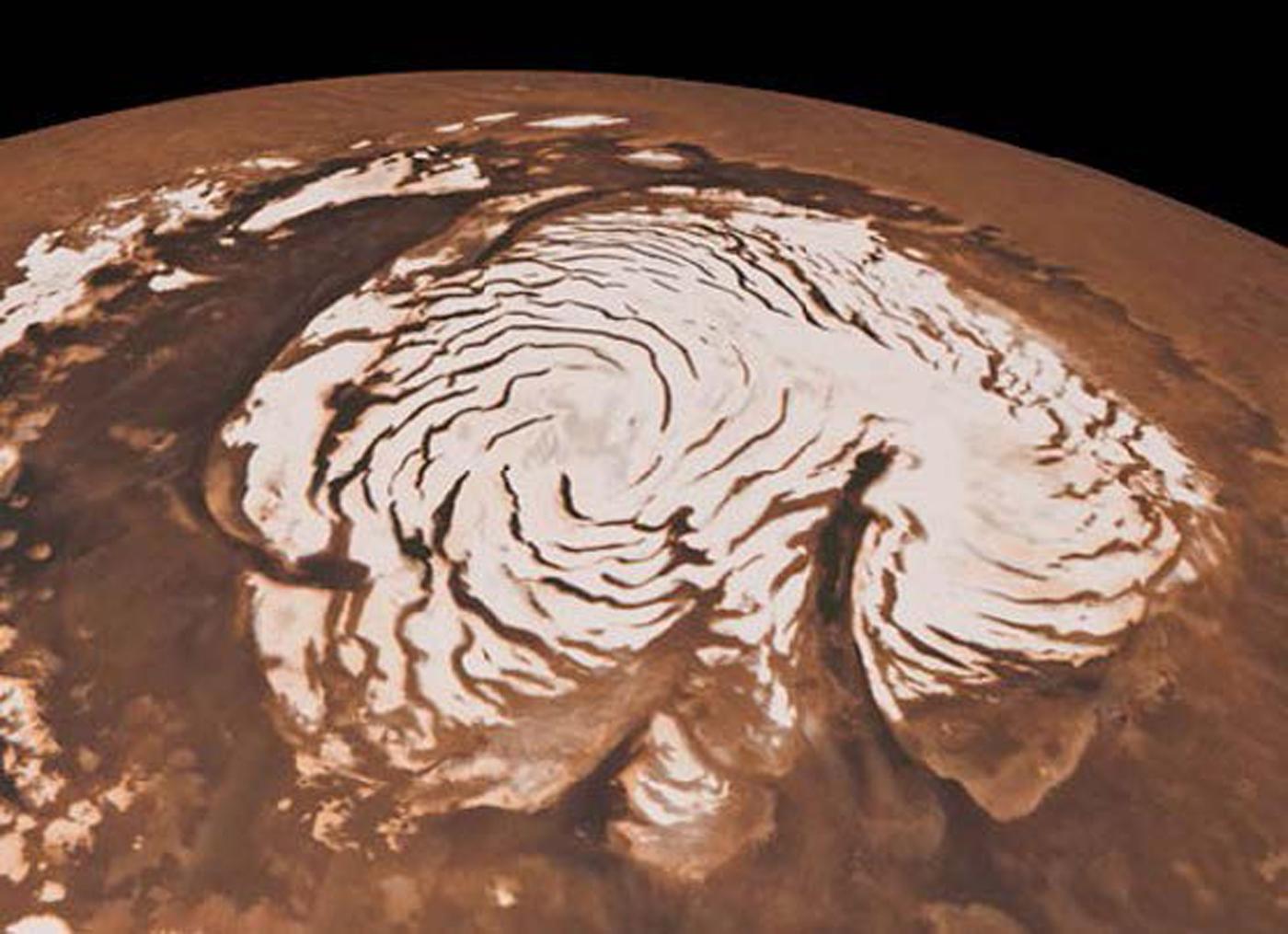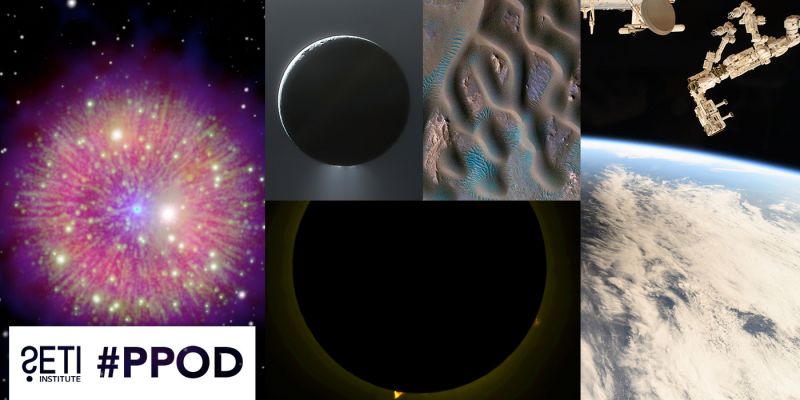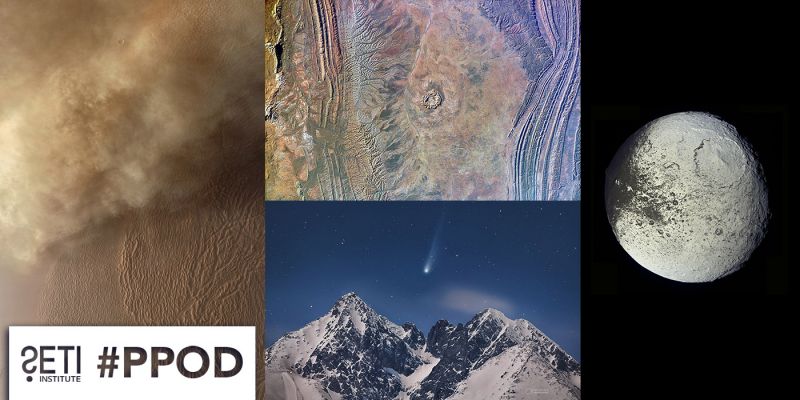
MOUNTAIN VIEW – A science team led by Adrian Brown of the SETI Institute has measured the seasonal changes in Mars northern ice cap, and finds a net deposition each year that’s slightly more than the thickness of a human hair.
This measurement will allow greater understanding of how much water is active (as opposed to being permanently frozen) in the martian water system today, and how future astronauts might use it.
“Just like farmers on Earth, visitors to Mars will need to know about the water cycle, how it operates seasonally, where the water comes from, and where it’s being stored now,” says Brown.
While Mars’ polar caps were first spotted in 1666, it wasn’t until nearly two centuries later that astronomer William Herschel made the suggestion that they might be analogous to the ice caps of Earth, and a potential source of water.
Brown and his team used the spectrometer known as CRISM on the Mars Reconnaissance Orbiter to monitor the infrared absorption bands of ice in the northern polar cap. In winter, the carbon dioxide at the Martian poles freezes, and every exposed surface cools down to -190 F.
But during the summer, the polar caps thaw and occasionally get up to a balmy -100 F. Water molecules start warming up and traveling around the cap.
The scientists tracked the movement of water ice and the nighttime snowfall events that happen during the north polar cap summer. They were able to follow the movement of water around the cap by identifying a latitude at which the polar cap ice goes from a ‘subliming’ state in the middle of summer (losing ice cover) to when it reverts to the ‘condensing’ stage (accumulating ice) late in the season as the Sun gets lower.
Studying this pattern, they’ve worked out how much ice gets transported onto the Martian northern cap in a year. It amounts to a thickness of 70 microns.
Whatever ice remains at the end of summer becomes a permanent part of the cap, as it will be covered in dry ice as winter sets in. This is likely how the cap built up over time, and gives future Martian colonists an indication of how much ice they can renewably harvest each northern summer.
The ice deposition rate gives insights into martian climate history. Future researchers will be able to drill cores into the cap that will give a longer perspective on the Red Planet’s climate record, similar to what we have been able to measure on Earth. These future efforts might even find evidence of buried carbon or methane that’s trapped beneath the surface. This may be the best approach to resolving the current controversy over the presence of methane in the martian atmosphere. Methane could be an indicator of underground bacteria.
Continued research into the behavior of the polar cap is a key that can open the door to a deeper understanding of Mars’ climate.
“This work speaks to both the past and future of an essential resource on the Red Planet,” notes Brown.
The results are published in the journal, Icarus.
http://www.sciencedirect.com/science/article/pii/S0019103516301476
Images here:
http://www.seti.org/sites/default/files/water_farming_mars.jpg
http://www.seti.org/sites/default/files/water_farming_water_cycle.jpg
About the SETI Institute
Founded in 1984, the SETI Institute is a non-profit, multi-disciplinary research and education organization whose mission is to lead humanity’s quest to understand the origins and prevalence of life and intelligence in the Universe and to share that knowledge with the world. Our research encompasses the physical and biological sciences and leverages expertise in data analytics, machine learning and advanced signal detection technologies. The SETI Institute is a distinguished research partner for industry, academia and government agencies, including NASA and NSF.
Contact information
Adrian Brown
SETI Institute
Email: abrown@seti.org
Tel: +1 408 832-6290
Media Contact:
Seth Shostak
SETI Institute
Email: seth@seti.org
Tel: +1 650 960-4530





